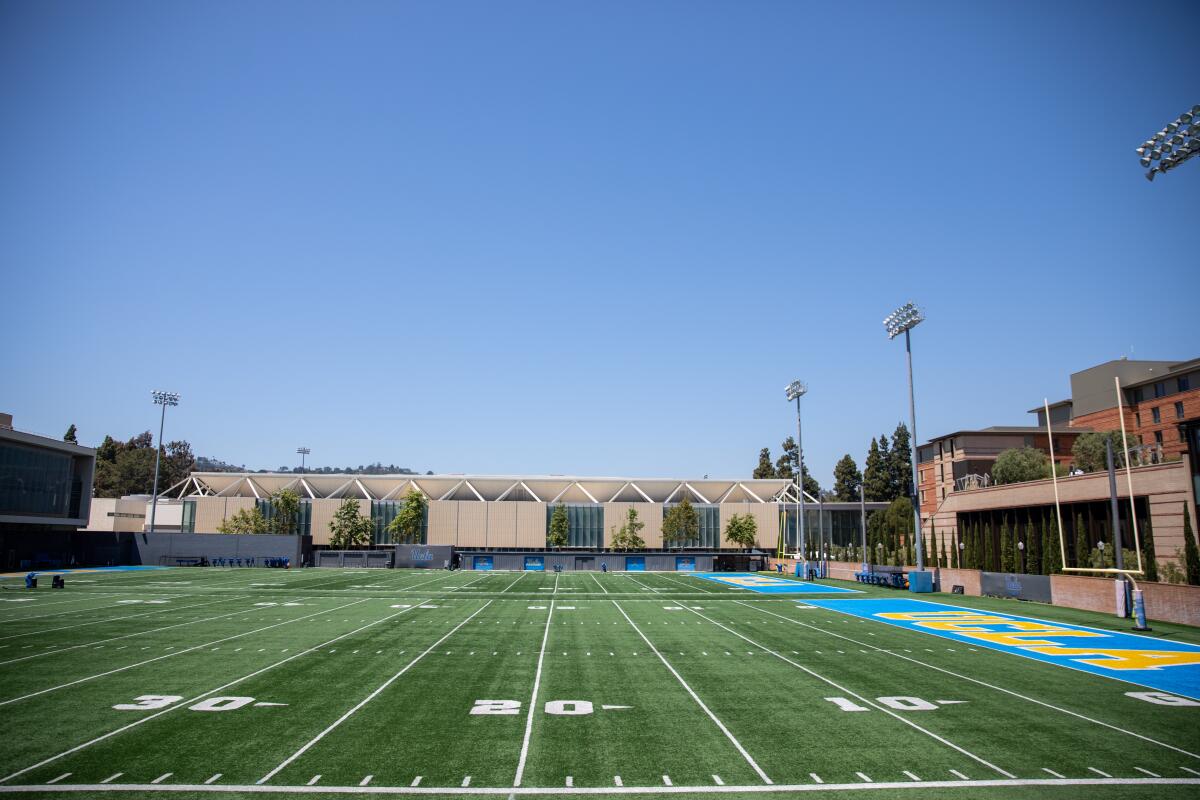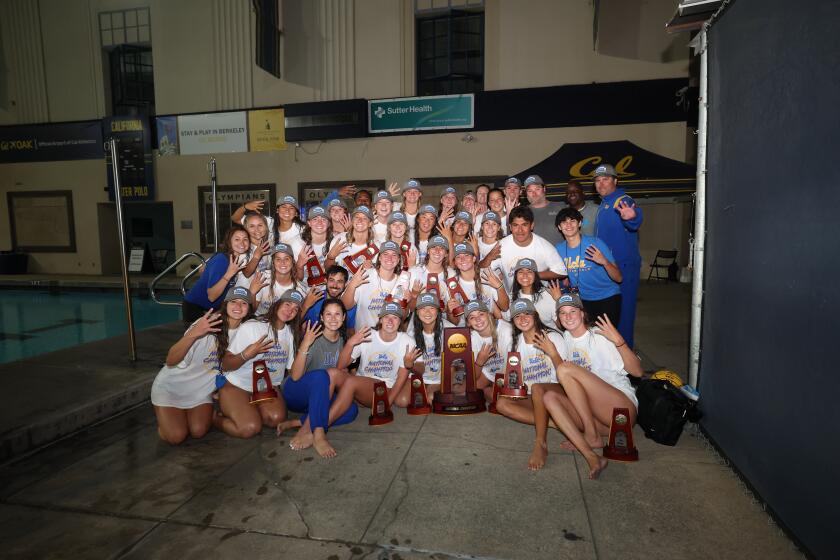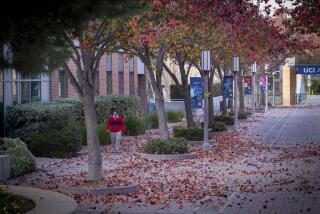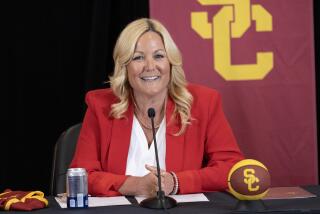UC regents order UCLA to pay $10 million annually in ‘Calimony’ for three years

The University of California regents on Tuesday ordered the school to pay conference rival California a maximum $10-million annual subsidy for leaving the Pac-12, but in a temporary triumph for UCLA, for only half of the previously proposed period.
By a vote of 7-1, the regents’ special committee on athletics endorsed the plan for UCLA pay Cal for each of the next three years — instead of six — because of a projected $50-million-per-year disparity in the schools’ athletic revenue with UCLA joining the Big Ten Conference.
The regents said they intended to revisit the payment amount halfway through UCLA’s six-year contract with the Big Ten that ends in 2029-30. They also agreed that any change in revenue or expenses for UCLA or Cal exceeding 10% of the 2024-25 figures would trigger immediate discussions to adjust the payment amount.
The measure still has to be approved by the full board of regents Thursday, though that’s expected to be a formality.
UC president Michael V. Drake had recommended that UCLA make the $10-million payment through the full duration of the school’s Big Ten contract. The eight-figure payment the regents approved represented the high end of the $2-million-to-$10-million range they discussed in December 2022 as part of their efforts to help close the gap in athletic revenue between the schools.
Regent Keith Ellis, who represented the lone dissenting vote, said during the open session held at UC Merced that the payments set an unwarranted precedent.
“We historically haven’t done anything like this,” Ellis said, “where we take from one campus and give to another, playing, I guess, Robin Hood.”
It’s likely that college sports will look vastly different by the time the regents revisit UCLA’s subsidy. Athletes could soon be considered employees of their universities with revenue-sharing agreements in place that drastically alter the way athletic departments operate.
“The landscape is so turbulent,” Cal chancellor Carol Christ said. “We’re going to have very difficult choices ahead.”
UCLA is being forced to pay the subsidy known as “Calimony” after announcing in June 2022 that it was leaving the Pac-12 alongside USC for the Big Ten and a far more lucrative media-rights deal starting this August. Oregon and Washington subsequently decided to join their Southern California counterparts in the Big Ten, further contributing to the dissolution of the Pac-12.
Cal later agreed to join Stanford and Southern Methodist as part of an expanded Atlantic Coast Conference while taking a reduced share of the conference’s media-rights deal.
UCLA beats Cal to become just the fifth team to complete a perfect season in NCAA women’s water polo history.
UCLA, which was represented at the regents meeting by athletic director Martin Jarmond, is expected to make roughly $60 million a year in media-rights revenue compared to only around $11 million for Cal during its first seven years of ACC membership. The Golden Bears will receive larger percentages of conference revenue over the next two years before getting a full share in Year 10.
Critics of the “Calimony” payments that will total at least $30 million feel UCLA is being unfairly punished for seeking the best deal to secure its own future as part of a rapidly changing college sports landscape. Should the Bruins bear the responsibility for being proactive, not to mention a more coveted commodity than the Golden Bears?
Student regent Merhawi Tesfai, a UCLA graduate student who is seeking master’s degree in social welfare and public policy, said he could not support the maximum payment for an indefinite period given the inevitable collapse of the Pac-12.
“I think we’re essentially hurting UCLA as they go to a more competitive conference,” Tesfai said, “on top of the impacts that have been put on Berkeley going to the ACC.”
A $10-million annual payment could put UCLA at a competitive disadvantage in its new conference, particularly when it’s added to a yearly tab as high as $10.32 million that the school has committed to spending on enhanced nutrition, mental health and academic tutoring for athletes in addition to more chartered flights to mitigate travel challenges.
The subsidy also represents a setback for an athletic department that has run up $167.7 million in debt since the 2019 fiscal year, spurring the move to the Big Ten that will provide value beyond the media-rights deal. UCLA also is expected to receive a larger share of College Football Playoff revenue as well as more money from NCAA tournament distributions based on the Big Ten’s recent success in both events.
Now some of that money will be headed to Berkeley, which faces its own massive deficit. Christ said her school’s athletic department was using a five-pronged approach to improve its bottom line by centralizing athletic scholarships in the financial aid office; raising a $100-million endowment for Olympic sports; increasing the revenues generated from Memorial Stadium via more income-producing events; dissolving some funds functioning as endowments and increasing the takeout of athletic endowments to the maximum; and using the UCLA subsidy.
More to Read
Go beyond the scoreboard
Get the latest on L.A.'s teams in the daily Sports Report newsletter.
You may occasionally receive promotional content from the Los Angeles Times.








